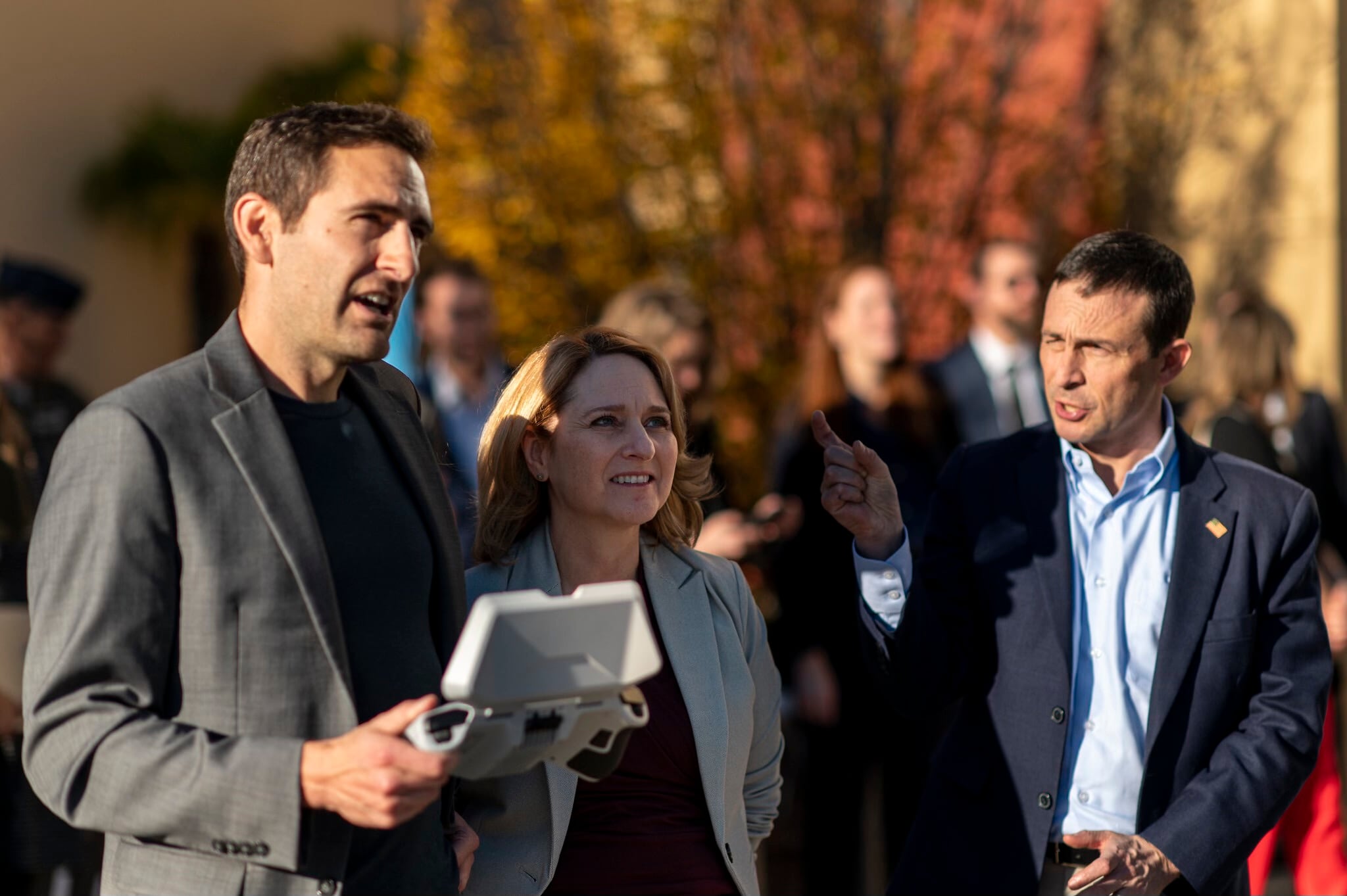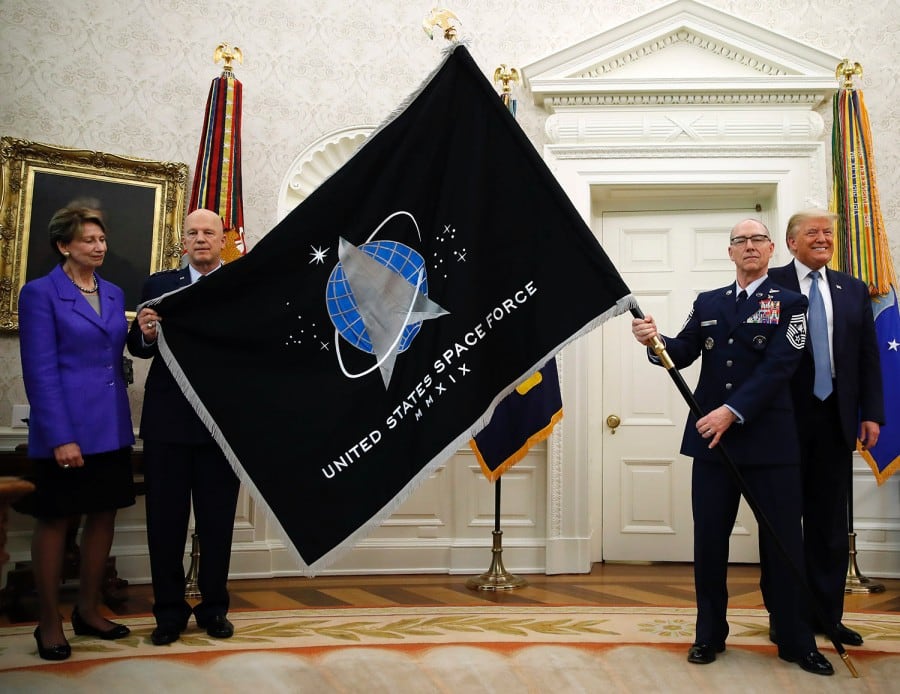Warfighter Information Network-Tactical (WIN-T) is the Army's tactical program for at-the-halt and on-the-move communications. This summer, WIN-T Project Manager COL Ed Swanson transitions to his new position as chief of staff for PEO Intelligence, Electronic Warfare & Sensors, and he provided a WIN-T status update via written responses to questions prior to his departure from the program.
The Army approved WIN-T Increment 2 full-rate production on June 8. See related story.
You have been the PM for WIN-T for nearly four years. What will your legacy be?
COL ED SWANSON: I hope my legacy will be to have fulfilled our mission of providing fully integrated, easy to operate and cost-effective tactical networks and services that meet the needs of the soldier. Our top priority remains supporting the war fighter, and we have done this during Operation Iraqi Freedom, Operation Enduring Freedom and supporting other overseas contingency operations around the world. Now that the network is being deployed to lower levels and the users are not always signal soldiers, we need to continue to make sure the equipment is simple to install, operate and maintain so they can "fight the battle" instead of "fighting the network." We have made a lot of progress in this area and will continue to deliver the best capabilities we can to the war fighter.
Related: Swanson's successor picked
How important was it for WIN-T Increment 2 to get Full Rate Production approval?
SWANSON: It was critical given the fiscal environment we are in. Over the past three years, LTC LaMont Hall and the WIN-T Increment 2 product office have conducted three of the largest operational tests in Army history and made significant improvements in reliability and reducing complexity of the Increment 2 system and individual components. In support of the Army's Capability Set fielding strategy, the Increment 2 team has fielded 12 brigade combat teams and four division headquarters over the past three years.
Now we can focus on making further improvements to the system and fielding Increment 2 to the rest of the Army. There are a number of improvements planned for size, weight and power [SWaP] reductions, increasing system performance, strengthening the cybersecurity posture and upgrading network operations [NetOps] capabilities. As we receive more feedback from soldiers, we will continue to look for opportunities to improve system performance, continue to reduce complexity and leverage commercial technology advances.
Now that WIN-T Increment 2 has the go ahead to field out the rest of the Army, what is the plan for WIN-T Increment 1?
SWANSON: The final WIN-T Increment 1 unit was fielded in August 2012. Since 2004, Increment 1 has been successfully fielded Armywide including: five corps, 18 divisions, 155 brigades and over 1,200 battalions. The extensive equipment list includes: regional hub nodes strategically located around the world, tactical hub nodes, joint network nodes and battalion command post nodes. Increment 1 will remain an important part of the Army's tactical network backbone for decades to come and retained by units not requiring the mobility of WIN-T Increment 2.
LTC Joel Babbitt and the Increment 1 team will complete a number of upgrades to enhance interoperability, improve security and conduct end-of-life technical refresh upgrades as components age and need replacing. Increment 1 will leverage these opportunities to improve system performance and reduce SWaP. As an example, the current end-of-life upgrades reduce the number of transit cases by over 1,000 and the weight of the transit cases by 30 percent.
What is the future for WIN-T Increment 3?
SWANSON: Increment 3 was restructured a little over a year ago to focus on finishing waveform and NetOps development. The enhanced beyond-line-of-sight waveform and improved NetOps capabilities will be tested and then inserted into both Increment 1 and Increment 2. Following an over-the-air demonstration of the enhanced line-of-sight waveform, it will be transitioned to the Department of Defense repository for potential use in the future.
Due to the fiscal environment, some of the Increment 3 capabilities were either de-scoped from the program or deferred to the future. One of those capabilities was the aerial tier, which would have augmented the terrestrial and satellite tiers. LTC Ward Roberts and the Increment 3 team are on track to execute a smart program shutdown at the end of 2016. We are planning to transition the product office to be the lead materiel developer for tactical cyber and network operations capabilities.
Enroute Mission Command Capability (EMC2) just completed initial operational capability (IOC). What does that mean for the Army and what lies ahead for EMC2?
SWANSON: EMC2 is a success story for rapid acquisition and being able to tailor a program to meet operational needs. The WIN-T Increment 1 Product Manager, LTC Babbitt, was able to leverage his extensive Joint Special Operations Command experience to deliver the IOC capability in less than two years from requirements validation. The IOC effort included modifying five Air Force C-17 aircraft with Fixed Installation Satellite Antennas and a roll-on/roll-off communications node capability to support the Army's Global Response Force [GRF] mission.
The full operational capability will outfit additional C-17 aircraft and provide more roll-on/roll-off communications nodes. EMC2 will allow the GRF to have enhanced situational awareness while en route to be the nation's first responders anywhere in the world.
There is a lot of emphasis being placed on expeditionary mission command and command post modernization. What role will PM WIN-T play?
SWANSON: PM WIN-T will play a key role in both efforts. As already mentioned, EMC2 will provide the GRF with enhanced situational awareness while inflight for early and forced entry operations. Another new program being led by LTC Leonard Newman and the satellite communications team is Transportable Tactical Command Communications [T2C2]. T2C2 will provide small teams and small command posts with early entry satellite communications. The bridging solutions until T2C2 is fielded are the Global Rapid Response Information Package and SIPRNet NIPRNet Access Pointsystems both managed by LTC Newman's SATCOM product office. For command post modernization, we have been participating in the Integrated Concept Team meetings to help shape and scope the requirements. Additionally, PM WIN-T will also be fielding command post Wi-Fi and 4G LTE capabilities that will support both expeditionary mission command and command post modernization efforts.
With WIN-T Increment 1 being fully fielded, WIN-T Increment 2 achieving full rate production, WIN-T Increment 3 being restructured, and many of the WIN-T SATCOM systems transitioning to sustainment, what lies on the horizon for WIN-T?
SWANSON: PM WIN-T will still have a lot of mission for the foreseeable future. WIN-T Increment 1 has end-of-life upgrades planned for all their fielded units. Increment 2 will field out the rest of the Army through 2029. EMC2, T2C2, Command Post Wi-Fi and 4G LTE are all new capabilities that will be fielded to enhance mission command capabilities. The importance of NetOps and cyber capabilities will continue to grow and WIN-T will be the tactical communications materiel developer lead. Additionally, as the Army continues to define and refine expeditionary mission command and command post modernization requirements, PM WIN-T will help provide solutions and deliver the needed capabilities.
Do you have any parting thoughts as you finish out your time as the PM for WIN-T?
SWANSON: I want to thank the WIN-T workforce for what they do every day to provide and support the best capabilities possible to the war fighter. I also want to thank the Army and Office of the Secretary of Defense community for working together as a team and supporting the programs in the WIN-T portfolio. Last but certainly not least, I would like to thank industry who are critical partners in developing, training, fielding and supporting our products to our end customer, the soldier. ■






